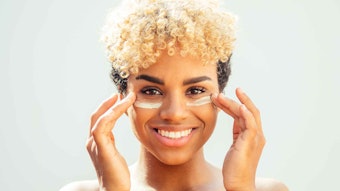What happens to certain skin care active ingredients after they are applied to the skin and exposed to sunlight? Do they function as intended? Or do they undergo chemical or structural changes that render them less effective or even ineffective?
Previously, the skin care active ingredients retinol (vitamin A) and retinyl palmitate were studied by these authors, finding that exposure to UVR caused them to lose their structural and, to some extent, their chemical integrity.1 In this article, similar stability studies on trans-resveratrol are reported.
Resveratrol is a polyphenol that occurs naturally in at least 72 plant species.2 Dietary sources include peanuts, peanut butter, the seeds and skins of grapes and wine. Resveratrol is a member of the stilbene family of chemicals, whose members exhibit two aromatic rings connected by a methylene bridge. Resveratrol exists in two isomeric forms, trans- and cis- (see Figure 1) and as the glucoside piceid, also called polydatin. The trans- isomer is the more common and is believed to be more stable and biologically active.3










